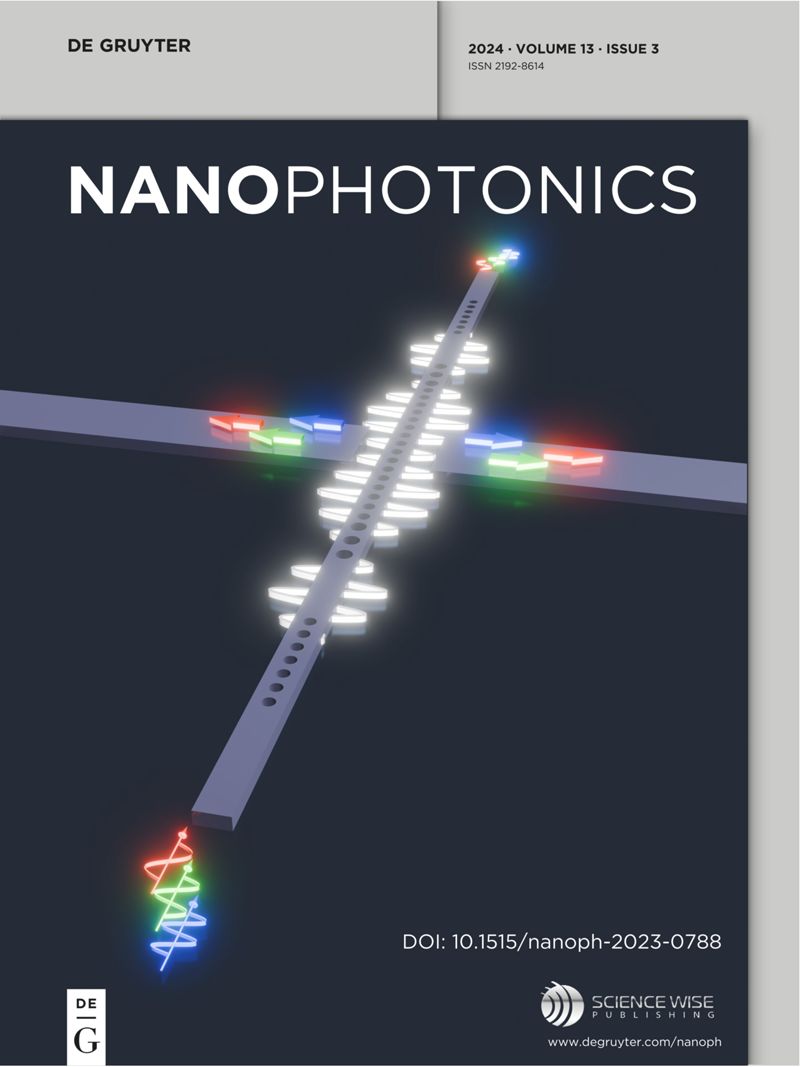Cascaded metasurface for polarization-dependent varifocal vortex beam manipulation
IF 6.6
2区 物理与天体物理
Q1 MATERIALS SCIENCE, MULTIDISCIPLINARY
引用次数: 0
Abstract
Vortex beams, characterized by orbital angular momentum (OAM), hold significant potential in optical communications, quantum information processing, and optical manipulation. However, existing metasurface designs are largely confined to single-degree-of-freedom control, such as static OAM generation or fixed focal points, which limiting their ability to integrate polarization multiplexing with dynamic focal tuning. To address this challenge, we propose a tunable multifunctional cascaded metasurface that synergizes polarization-sensitive phase engineering with interlayer rotational coupling, overcoming conventional device limitations. The designed metasurface independently generates distinct OAM states in orthogonal circular polarization channels under right-handed circularly polarized (RCP) incidence, that is, a vortex beam with topological charge ℓ = −1 in the left-handed circularly polarized (LCP) channel and a superimposed vortex state (ℓ = +1, −1) in the RCP channel. Continuous focal tuning is achieved via interlayer rotation in the axis-direction, with experimental validation at target frequency. Experimental results demonstrate the focal length modulation range from 25.9λ to 9.5λ as the interlayer rotation angle varies between 90° and 240°. This multi-degree-of-freedom control strategy establishes a new method for high-capacity optical communications, dynamic holography, and quantum state manipulation, while advancing the development of intelligent metasurfaces for 6G networks and integrated photonic systems.偏振相关变焦涡旋光束操纵的级联超表面
涡旋光束以轨道角动量(OAM)为特征,在光通信、量子信息处理和光操纵等领域具有重要的应用潜力。然而,现有的超表面设计很大程度上局限于单自由度控制,例如静态OAM生成或固定焦点,这限制了它们将偏振复用与动态焦点调谐集成在一起的能力。为了解决这一挑战,我们提出了一种可调谐的多功能级联超表面,它将极化敏感相位工程与层间旋转耦合协同起来,克服了传统器件的限制。所设计的超表面在右手圆极化(RCP)入射下,在正交圆极化通道中独立产生不同的OAM态,即在左手圆极化(LCP)通道中存在拓扑电荷为−1的涡旋光束,在RCP通道中存在拓扑电荷为+1,−1的叠加涡旋态。连续焦点调谐是通过层间旋转在轴向,与实验验证在目标频率。实验结果表明,当层间旋转角度为90°~ 240°时,焦距调制范围为25.9λ ~ 9.5λ。这种多自由度控制策略为大容量光通信、动态全息和量子态操纵建立了新方法,同时推动了6G网络和集成光子系统的智能超表面的发展。
本文章由计算机程序翻译,如有差异,请以英文原文为准。
求助全文
约1分钟内获得全文
求助全文
来源期刊

Nanophotonics
NANOSCIENCE & NANOTECHNOLOGY-MATERIALS SCIENCE, MULTIDISCIPLINARY
CiteScore
13.50
自引率
6.70%
发文量
358
审稿时长
7 weeks
期刊介绍:
Nanophotonics, published in collaboration with Sciencewise, is a prestigious journal that showcases recent international research results, notable advancements in the field, and innovative applications. It is regarded as one of the leading publications in the realm of nanophotonics and encompasses a range of article types including research articles, selectively invited reviews, letters, and perspectives.
The journal specifically delves into the study of photon interaction with nano-structures, such as carbon nano-tubes, nano metal particles, nano crystals, semiconductor nano dots, photonic crystals, tissue, and DNA. It offers comprehensive coverage of the most up-to-date discoveries, making it an essential resource for physicists, engineers, and material scientists.
 求助内容:
求助内容: 应助结果提醒方式:
应助结果提醒方式:


